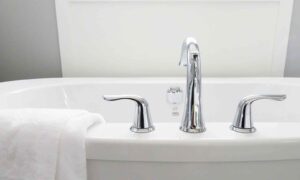If you have recently had a contractor in your home to carry out a DIY project or home improvements and a problem with your flooring or carpeting has arisen as a result, there are a few techniques you can try to clean and fix it rather than becoming one of many contractor disaster stories that populate the internet.
Damage to flooring – think paint spillages and chipping to hardwood floors – is a common complaint among people who have hired contractors to carry out some handywork. Whilst contractors have to be covered by insurance under most U.S. state laws, having flooring replaced and then recovering the costs can be a time-consuming process.
If you can fix the damage and get your flooring back to the state it was prior to the contractor’s work, then that’s the far better option. Here are a few techniques, but be aware that it’s not always possible to clean and fix damaged carpeting or hardwood flooring.
#1: Hardwood Flooring: Scratches and Gouging
If your contractor has gouged or scratched your hardwood floor with his tools or by dragging equipment and furniture across it, you can probably fix it quite easily; there’s not always a need to have it replaced.
For superficial scratches and gouges, the fix is as simple as applying a light wax or floor polish and gently rubbing it into the marks. Wood renewal formulas can also be a viable alternative that disguise light scratching.
#2: Carpets: Paint Spillages
Whether you will be able to get paint off your carpet largely depends on what type of paint was used. If it’s paint which has been used for home improvements then, unfortunately, it’s likely to be a professional-grade paint based with oil which are harder to clean.
If the paint is still wet, then scoop up as much of it as possible with an old spoon or piece of cardboard, then try to soak up the residual wet paint with paper towels. Oil-based paint can be removed with solvent such as white spirit. Be careful to only apply this to the paint though, and not the carpet.
#3: Tiled Flooring: Cracks and Shattering
A broken tile can stand out like a sore thumb, especially if your tiling is symmetrical and minimalist. You don’t need to remove the entire floor, though, and if the crack is quite small you may be able to repair it in situ rather than removing and replacing it.
This involves using primers, glue and sometimes a little bit of paint to fill in and disguise the crack. Although this can take some time, it’s a far better option than removing an entire tile, especially if it’s going to be hard to get your hands on a replacement.
A contractor causing damage to your floor is never ideal, but if something does happen to your carpet, hardwood or tiling, it doesn’t mean it’s a write-off and you now have to replace the entire thing. Using the above tips, you should be able to fix a few of the most common flooring problems.








